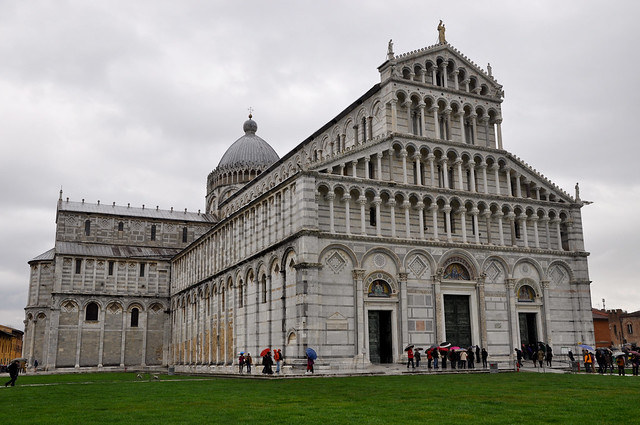
O Duomo foi o primeiro monumento que visitámos dos três que podíamos ver em Pisa. Foi construído em duas fases, a primeira no século XI com ajuda do dinheiro que os seus habitantes acumularam dos saques que fizeram a Palermo. No século XII termina a sua construção mas no século XVI após um incêndio tiveram que reconstrui-la. Ainda assim e depois de ter sobrevivido ao tempo e ás guerras, podemos visitar gratuitamente uma Catedral que muitos colocam para segundo plano ao visitar Pisa mas que nós gostámos muito de conhecer.
The Duomo was the first monument we visited out of the three that we could see in Pisa. It was built in two phases, the first in the eleventh century with the help of the money that the inhabitants accumulated from the loots made in Palermo. In the twelfth century ends its construction but in the sixteenth century after a fire it had to be rebuilt. Still and having survived the time and wars, we can visit for free a Cathedral that many put into the background when visiting Pisa but we very much enjoyed the experience.
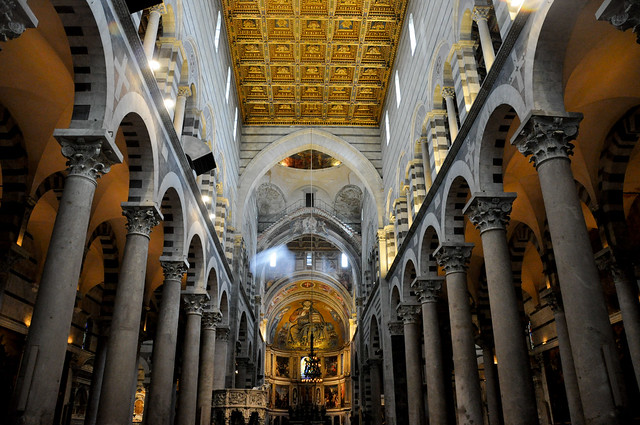
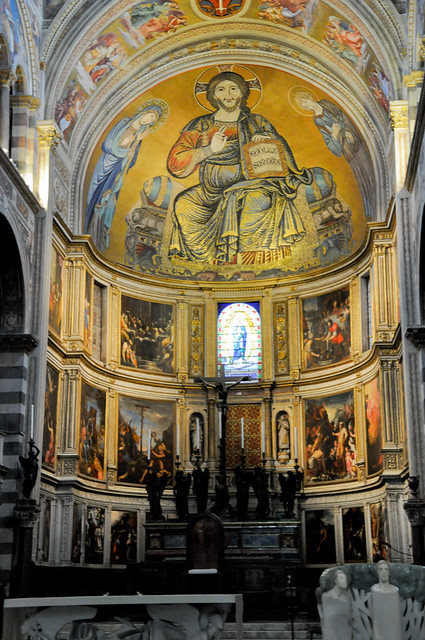
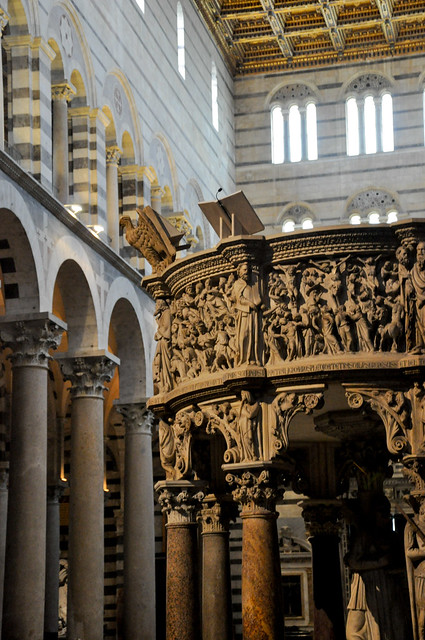
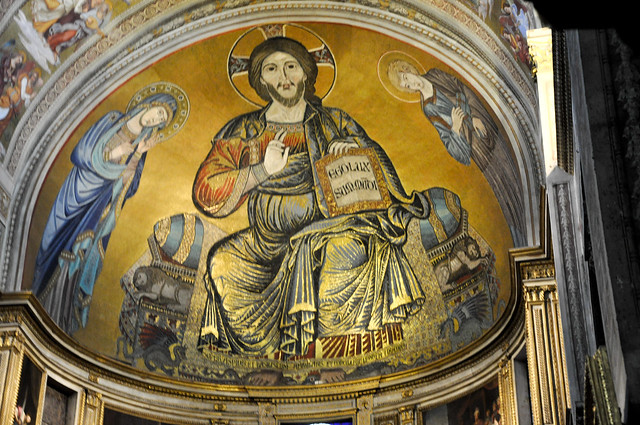
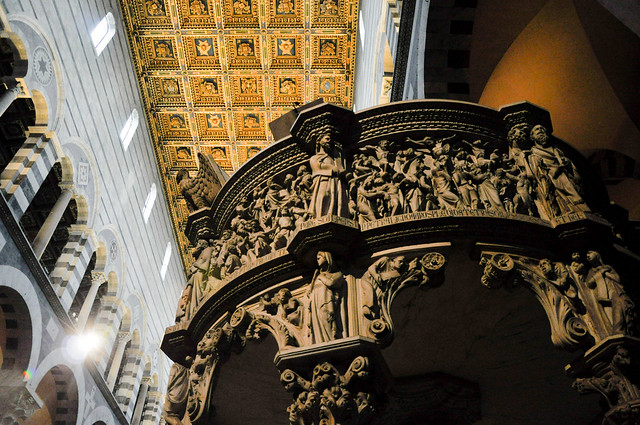

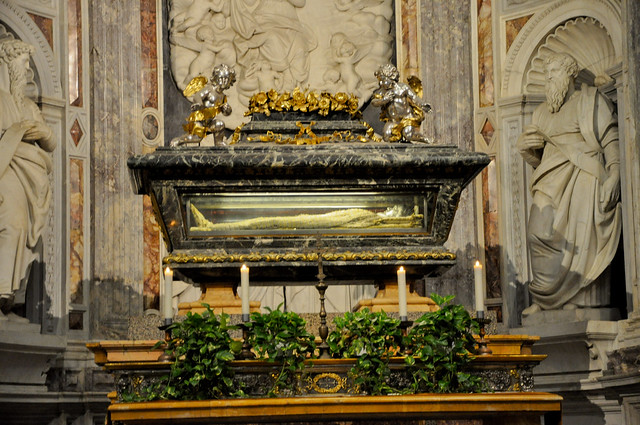
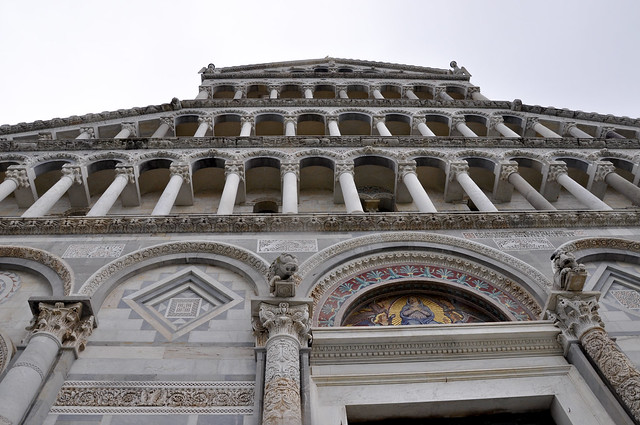

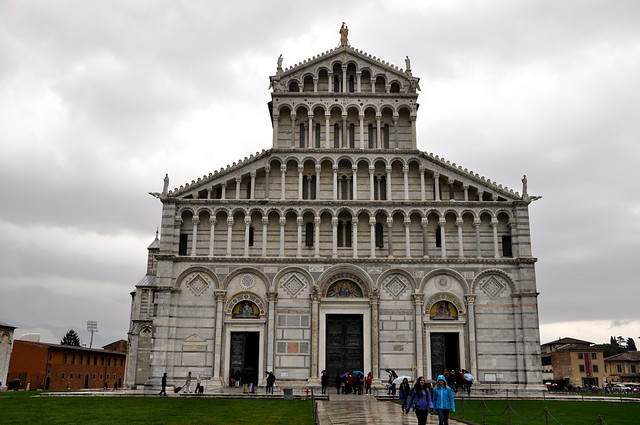

Ao entrar chamou-nos a atenção o tecto em madeira decorado e a zona do altar onde podemos ver o trabalho em mosaico com a imagen de Jesús Cristo tendo ao seu lado a Virgem Maria e o apóstolo S. João. Na cúpula central podemos ver os frescos de Riminaldi que contam a história da assunção da Virgem. O púlpito foi esculpido por Giovanni Pisano, filho de Nicola Pisano com quem fez o de Siena. Este é igualmente rico em detalhes contando algumas das histórias bíblicas mais conhecidas.
Fiquei impressionada com o túmulo de Raineri, o santo padroeiro de Pisa e dos viajeiros, talvez seja graças a ele que estava ali mas o que realmente me deixou impressionada foi o facto do túmulo ser em vidro o que permite vê-lo. É certo que não o vemos em detalhe, a sua cara está coberta com uma máscara e o corpo com um manto, ainda assim não deixávamos de pensar que estaría ali desde o século XII.
Going in what drew our attention were the wooden decorated ceiling and the altar area where we can see the work in mosaic with the image of Jesus Christ, having by his side the Virgin Mary and John the apostle. Also in the central dome we can see the frescoes by Riminaldi that tell the story of the Assumption of the Virgin. The pulpit was carved by Giovanni Pisano, son of Nicola Pisano who did the one from Siena. This is also rich in detail and it tells some of the best known Bible stories.
I was impressed with the tomb of Raineri, the patron saint of Pisa and wanderers, perhaps thanks to him we were there but what really impressed me was the fact that the tomb was made of glass which allows to see him. Admittedly, we do not see in detail, his face is covered with a mask and body with a blanket, still we couldn't stop thinking that it was there since the twelfth century.
I was impressed with the tomb of Raineri, the patron saint of Pisa and wanderers, perhaps thanks to him we were there but what really impressed me was the fact that the tomb was made of glass which allows to see him. Admittedly, we do not see in detail, his face is covered with a mask and body with a blanket, still we couldn't stop thinking that it was there since the twelfth century.










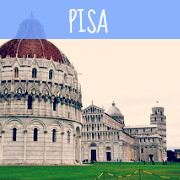
Sem comentários:
Enviar um comentário